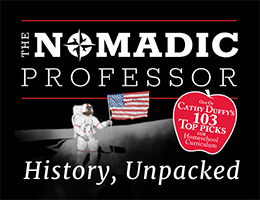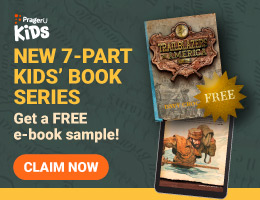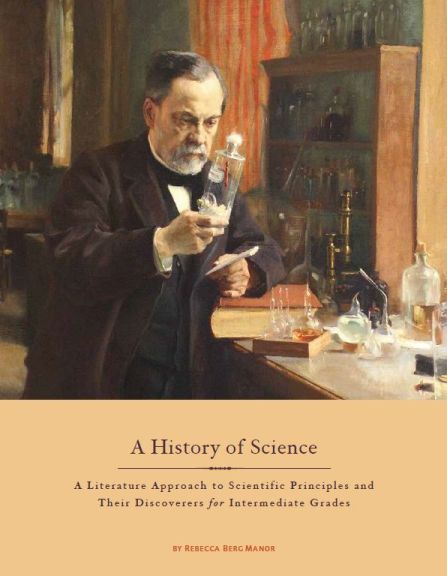A History of Science is a guide for a literature-based introduction to science for children in grades three through seven. The guide takes students through a number of real books for a one-year study of science that includes experiments and creation of a notebook. (Note that the previous version of this guide was significantly different and targeted a younger audience.)
The complete package from Beautiful Feet Books includes the guide along with The Way Science Works, The Picture History of Great Inventors, Archimedes and the Door of Science, Leonardo da Vinci (by Diane Stanley), Along Came Galileo, Isaac Newton: The Scientist Who Changed Everything, Ben Franklin of Old Philadelphia, Pasteur’s Fight Against Microbes, The Story of Thomas Alva Edison, The Story of Alexander Graham Bell, George Washington Carver (by Tonya Bolden), The Wright Brothers for Kids: How They Invented the Airplane, Marie Curie’s Search for Radium, Ordinary Genius: The Story of Albert Einstein, and The History of Science Timeline. Many of these books I would recommend to you even aside from this particular study!
The lessons are divided into three sections—Ancient Scientists, Medieval and Renaissance Scientists, and Modern Scientists. The Modern Scientists section is the largest with 40 of the course’s 70 lessons.
Lessons start with The Picture History of Great Inventors, a colorful picture book similar to so many of the Usborne and DK books. It is strictly introductory in content, although I suspect you will need to provide extra explanation for some of the pictures with younger children. This book serves as a “spine book” throughout the study—start here then branch off into other activities and reading that take students further into each topic.
The selected biographies in the package make this very much a “story approach” for learning about both science and scientists. In addition, the book The Way Science Works is used throughout the course as a source of information as well as for numerous hands-on projects and experiments.
Students will build a science portfolio as they work through the course. A three-ring binder makes the most sense for this since students will write on lined paper and draw on unlined pages. The binder will be divided into three sections: The History of Scientific Discovery, Experiments and Lab Reports, and a Glossary of Scientific Terms. You will probably want separators so that students can easily find each section. In their notebooks, students will write reports, record their findings from both reading and experiments, answer questions, draw diagrams or illustrations, create maps, write journal entries, and create a glossary. Students will write a number of reports, but it is up to parents to decide how detailed or lengthy those reports should be. An answer key with suggested responses for the questions is at the back of the book. Since there are a limited number of questions with predictable answers, the answer key is brief. Students will also make entries on The History of Science Timeline that comes with the complete course.
Most experiments and activities come from The Way Science Works. However, a few activities are described within the lesson plans, three are at the back of the guide, some are on the internet (URLs provided), and a few are found in the other assigned books. A form at the back of the book, “Scientific Method Lab Report,” should be reproduced and used for writing up the experiments.
Experiments use mostly household items, but the list of required resources is lengthy. You will need to plan ahead to make sure you have all of them. At the front of the book, a few more specialized items are listed: an agar bacteria growing kit, acid indicator paper, lenses (for the Galilean telescope), and petri dishes. A microscope and slides are recommended but not required. This list of resources includes sources for each item.
Instructions are clear and specific enough that students in fifth through seventh grades should be able to work through most assignments on their own. All students will need parental assistance for many of the experiments. Parents need to read or be familiar with at least some of the books to be prepared for the occasional discussion as well as to be able to evaluate student work. So, while students might be able to complete much of their work on their own, this is not a completely independent-study course.
The reading and research should be sufficiently challenging for older students, but the level of challenge will depend somewhat on what parents require. On the other hand, some research and writing might be too much for younger students, so use discretion on assignments to be completed by them. For example, older students might write a four-page report, while younger students might write one page.
The course has some Christian content, but it shows up sporadically. For example, the ninth lesson addresses the origin of the universe by presenting a chart describing three well-known hypotheses: Creationism, the Big Bang Theory and Evolution (combined as one), and Evolutionary Creation. Obviously, these three don’t encompass all possible views, and I don’t see why they combined the Big Bang with Evolution as if that were the only compatible fit. But whether or not you agree with the categories really doesn’t matter. Students are to read the chart and discuss questions at the bottom of the chart, questions such as “How do you believe the universe came into being?” and “Do you believe that science and faith can complement one another?” The course doesn’t try to promote a particular view in this discussion, although it does have students look up and discuss Colossians 1: 16-17, verses which clearly support the concept of God as the Creator.
While A History of Science differs from most other approaches to the study of science, it is probably most similar to methods used by unit studies. Students search out and interpret information, and they are not memorizing particular information for tests. While lesson activities are sometimes open-ended, more often they are specific about what needs to be done. For example, on page 21, it says, “Begin a new section of the science portfolio entitled, ‘Benjamin Franklin, 1706-1790.’ As you study Franklin, illustrate this section of the science portfolio with drawings of his inventions.”
Personally, I very much like this approach to science because it combines stories about science with the factual information to be learned as well as hands-on activities. I think many children will also find this combination more interesting than traditional science textbooks.












